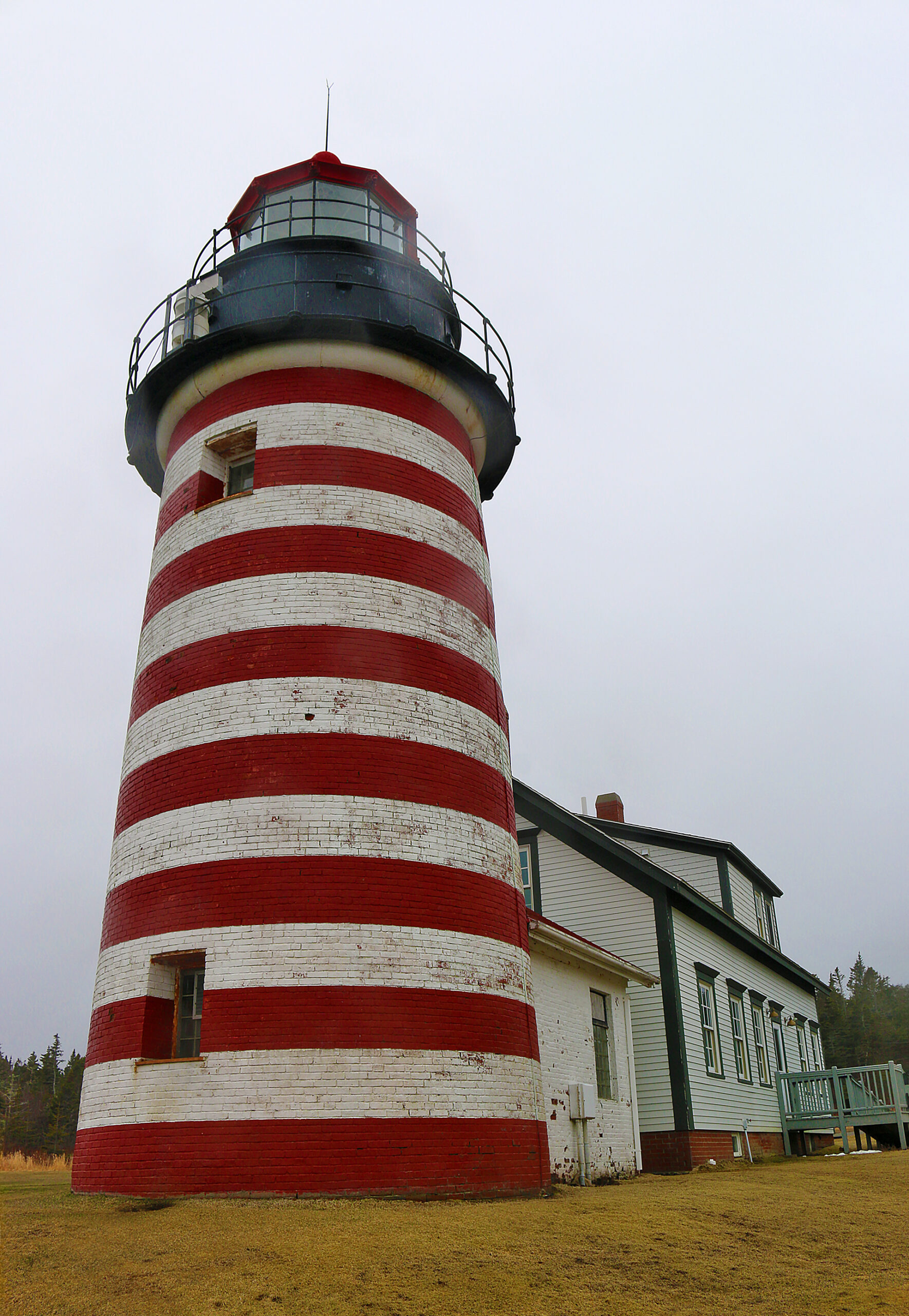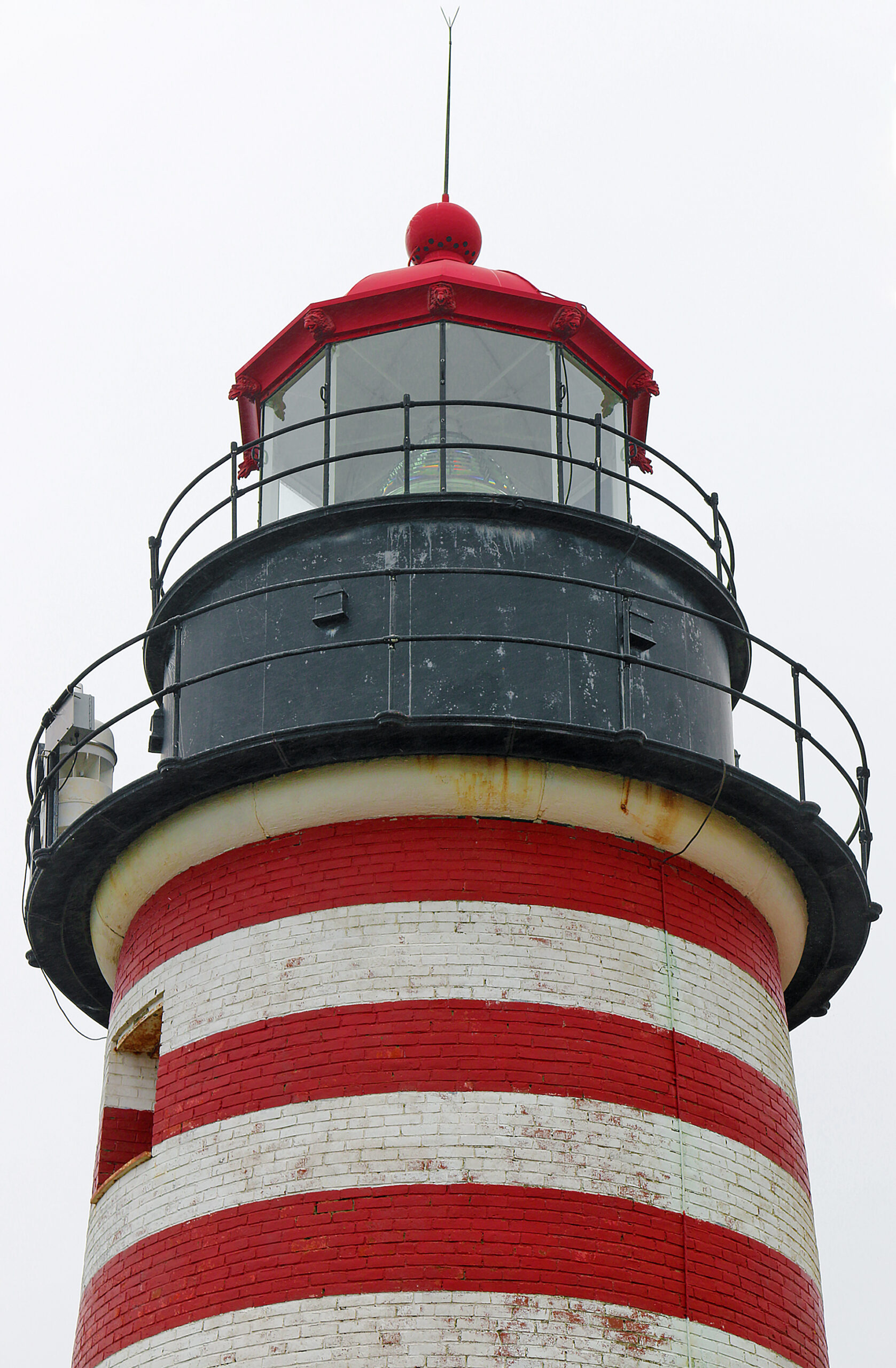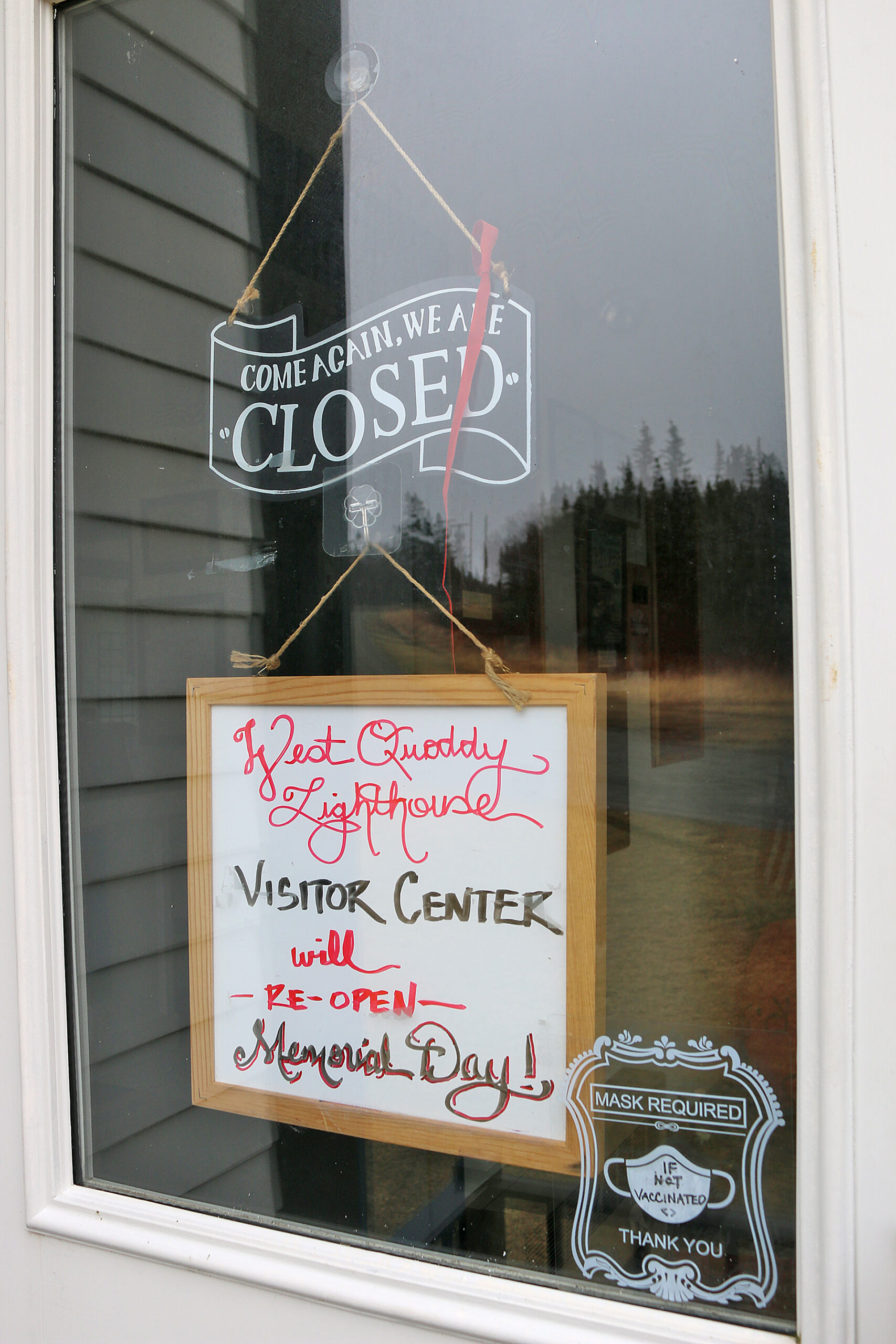If you have ever wondered where the easternmost point in the continental United States was located, West Quoddy Head in Maine is the spot at 44°48′55.4″ north and 66°56′59.2″ west.
The Easternmost Point in the Continental United States: West Quoddy Head in Maine

Construction of what is known as the original West Quoddy Head Light Station was completed on Thursday, April 21, 1808 by order of Thomas Jefferson, who was the president of the United States at that time. It is the easternmost building in the continental United States.

The original wooden tower was replaced by the current tower, which became operational in 1858. The red and white lighthouse is the only “candy striped” tower in the United States. Eight red stripes alternate with seven white stripes on the tower. Each stripe is approximately 25 inches wide.

The tower is 49 feet tall. Its base is 16 feet in diameter. The center of the lantern stands 83 feet above sea level. The light source today: Sealite emitting diode beacon SL-LED-216 is filtered through a 62.05 inch tall fresnel lens from France, Fresnel Lens, which was installed in 1858 along with the 50 step circular iron staircase to the top of the tower. The light was fully automated in 1988; and it is maintained by the United States Coast Guard today.
The lamp was originally illuminated with sperm whale oil; then lard oil; and finally kerosene and electricity in 1932. The light flashes in a pattern 24 hours a day: two seconds on; two seconds off; two seconds on; and nine seconds off. Although brutal storms have raged along this rustic coastline, the lighthouse has withstood them all for greater than 150 years.

The copper dome was replaced in 2004 due to pocking by hail. The visitor center currently occupies the lightkeeper’s house where several generations of lightkeepers lived with their families. With full automation of the light, a lightkeeper in residence is not needed and no longer exists — although a park ranger often occupies the apartment on the second floor of the house.

Hikers may choose from five hiking trails that wind for miles through the forest with beautiful scenery and along the edge of what is known as the Bold Coast.

The Coastal Trail offers spectacular views and passes Gulliver’s Hole, which is a narrow chasm that was formed from erosion of vertical fault in the volcanic gabbro rock. High Ledge is a bluff that is 150 feet in height; and Green Point is a large ledge where hikers can reach the beach at this point.

Final Boarding Call
Somehow, I thought that the weather was appropriate for my visit. The windy cold air and the dense fog lent to an atmosphere which had me feel like I was at the end of the earth and not simply at the easternmost point of the continental United States…
…which is similar to how I felt when I visited the westernmost point in Europe in Iceland.
Unfortunately, I visited the area when the visitor center and museum were closed for the season.
West Quoddy Head Lighthouse Visitor Center
973 South Lubec Road
Lubec, Maine 04652
United States
207-733-2180
Operating hours for the visitor center and museum:
Tuesday through Saturday: 10:00 in the morning until 4:00 in the afternoon
Sunday: 11:00 in the morning until 4:00 in the afternoon
Monday: Closed
The visitor center and museum are open from Memorial Day through Tuesday, October 15, 2024; and are closed for the remainder of the year.

No admission is charged to visit the easternmost point in the continental United States; and the viewpoint is never closed to anyone who wants to visit it. Facilities are available at the site during the hours of when the building is open to the public. Parking is available in a small parking lot and free of charge.
Tours to the top of the tower used to be given at intervals during the summer — typically every Saturday in the months of July and August — and during West Quoddy Annual Lighthouse Celebration in July, as well as the second Saturday in September for Maine Open Lighthouse Day…
…but tours have supposedly not been conducted since at least 2022.
Bring a jacket, coat, or other garments to keep you warm against what could potentially feel like brutally cold winds.
All photographs ©2022 by Brian Cohen.

